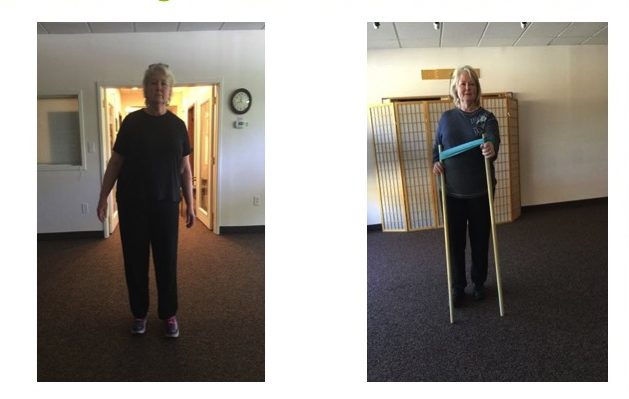Patients and therapists often feel there is nothing to treat once the spine is fused. They feel it is too late. Patients can feel “stuck” in their fused postures and struggle with bending, turning and walking. Pain may develop in joints that are misused to make up for lost movement after fusion. Patients are often fearful of damaging their fusions with movement. Experiences of long term back pain and often multiple spinal surgeries can be traumatic.
It is absolutely possible to treat patients after spine fusion. Patients are not typically fused at their hips, their shoulders or at their ribs. Because of this, most patients are able to restore a tremendous amount of healthy movement at their strong and mobile hip and shoulder joints rather than stressing their spine. Learning to breathe actively helps patients develop abdominal muscle control and improved respiratory diaphragm muscle function. Improved breath control means a stronger core and more protection for the fused spine.
Below are x-rays of a patient with large scoliosis and fusion due to severe limitations.

After the fusion, the patient began developing severe right hip tendonitis and left knee pain from meniscal tears. Her walking became extremely limited and painful. The first image below depicts the her standing posture before beginning Postural Restoration at Advance Physical Therapy. She had not experienced balanced posture in her body since before developing her scoliosis as a teenager. After her fusion, despite taking care of her back pain, she felt “stuck” in the position her hips had always been in. Further, fusion surgeries commonly do not fully correct skeletal imbalances that are severe.

Once this patient learned to use her highly capable left hip effectively, something she had not done since she was a child, her right hip pain dramatically improved. Further, as the patient began to transfer healthy motion to her left hip (a big and very mobile joint), her left knee (just a simple hinge joint) was no longer being twisted during walking. This allowed her knee problems to resolve without surgery. Finally, the patient learned to use her core and arms to balance out the change at her pelvis, hips and legs.
This patient worked hard to learn new posture and movement patterns over the course of 8 months. As a result she now has a personal exercise routine to follow to keep her posture balanced and her pain totally under control. I am grateful to this patient for her willingness to share her story. I am hopeful other patients with spine fusion will realize there is often a lot that can be done to reduce pain and improve function.



